Marin’s 2023 Rift Zone is the brand’s trail-focused mountain bike, boasting 140mm of front-wheel travel and 130mm at the rear.
This model runs on 29in wheels, but full 27.5in-hooped models are also available, along with junior-specific 26in and 24in-wheeled bikes.
The 2023 update sees the Series 3 6061 aluminium frame get some key changes to geometry and suspension kinematics, along with a host of refinements around cable routing and chain slap protection, all designed to refine the “made for fun” experience of the Rift Zone.
The XR version is the range-topper, and retails for £2,995 / $3,499 / €3,499 / CAD$4,449.
Marin Rift Zone 29 XR frame and suspension
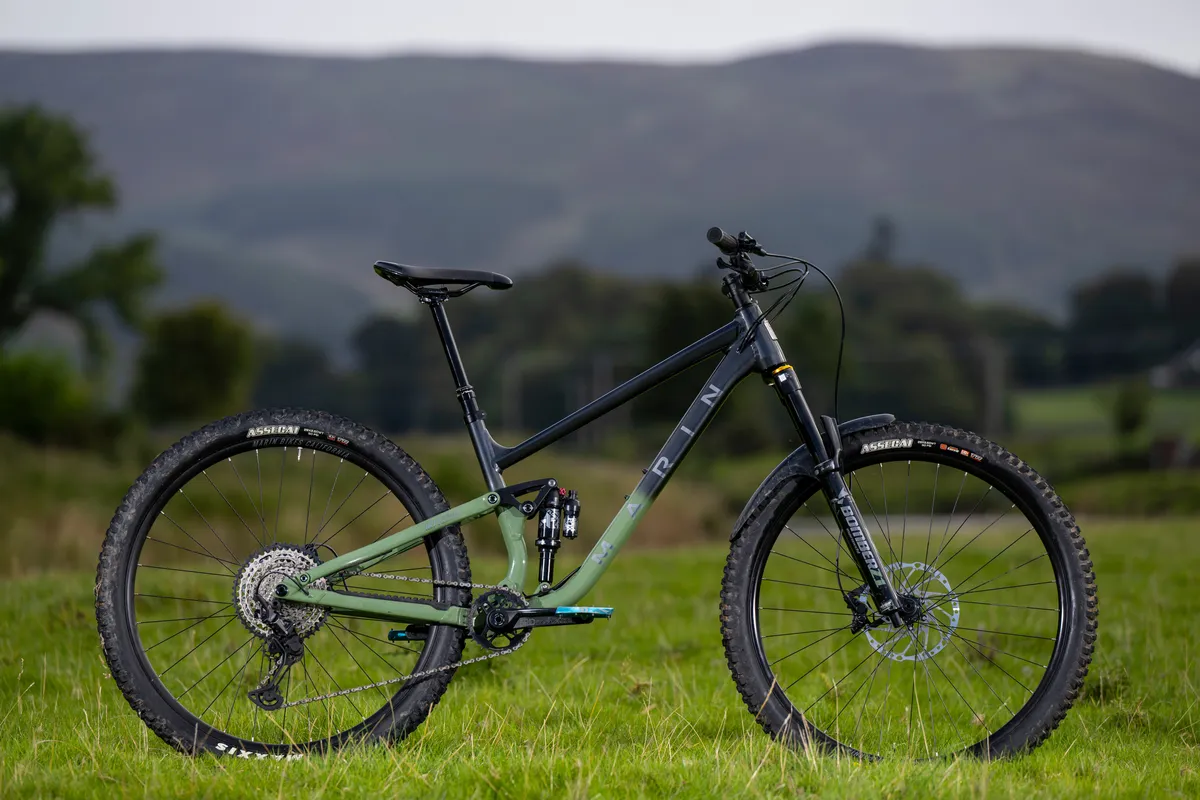
Special forming techniques have been used to give the Rift Zone’s Series 3 aluminium tubes their profiles and shape.
Its rear dropouts, main pivot yoke and rocker link are forged and its cables are routed internally.
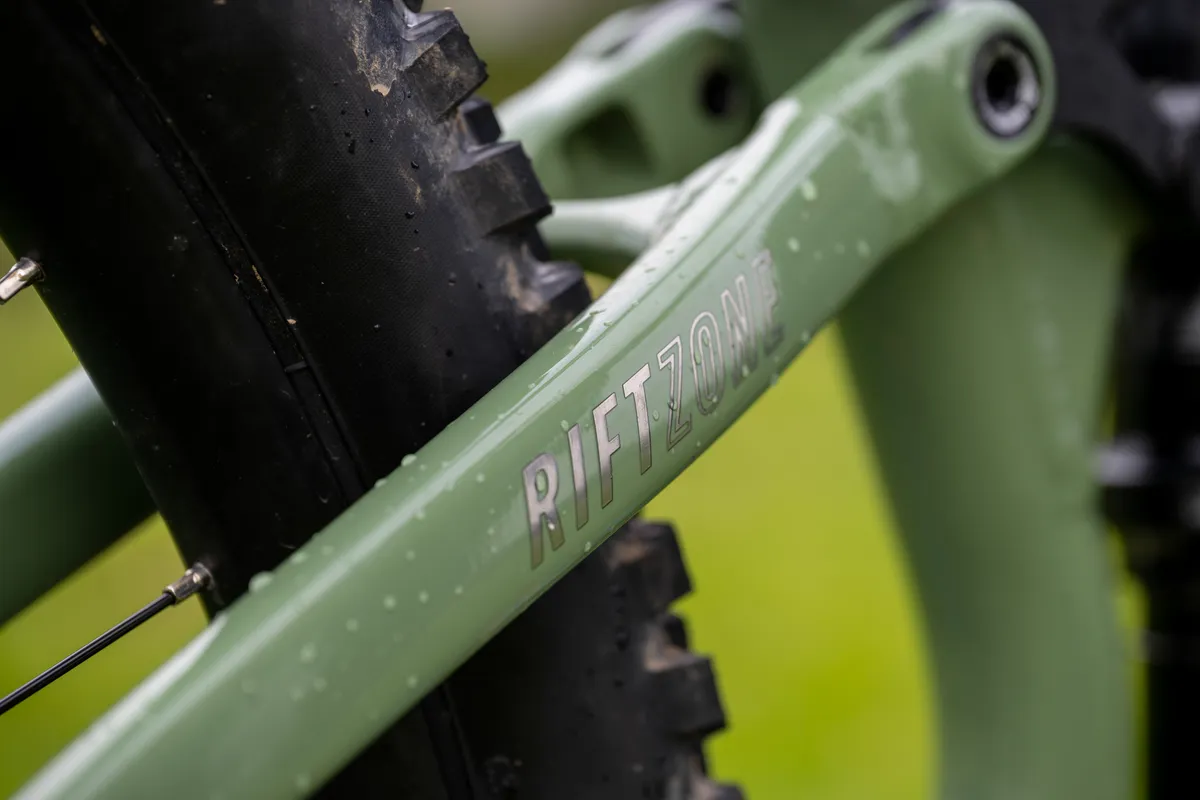
However, the 2023 iteration’s cable routing and ports have been refined.
The entry and exit ports on the front triangle use brazed-in sections with a smoothed finish. The ports next to the head tube are angled to help reduce cable bowing.
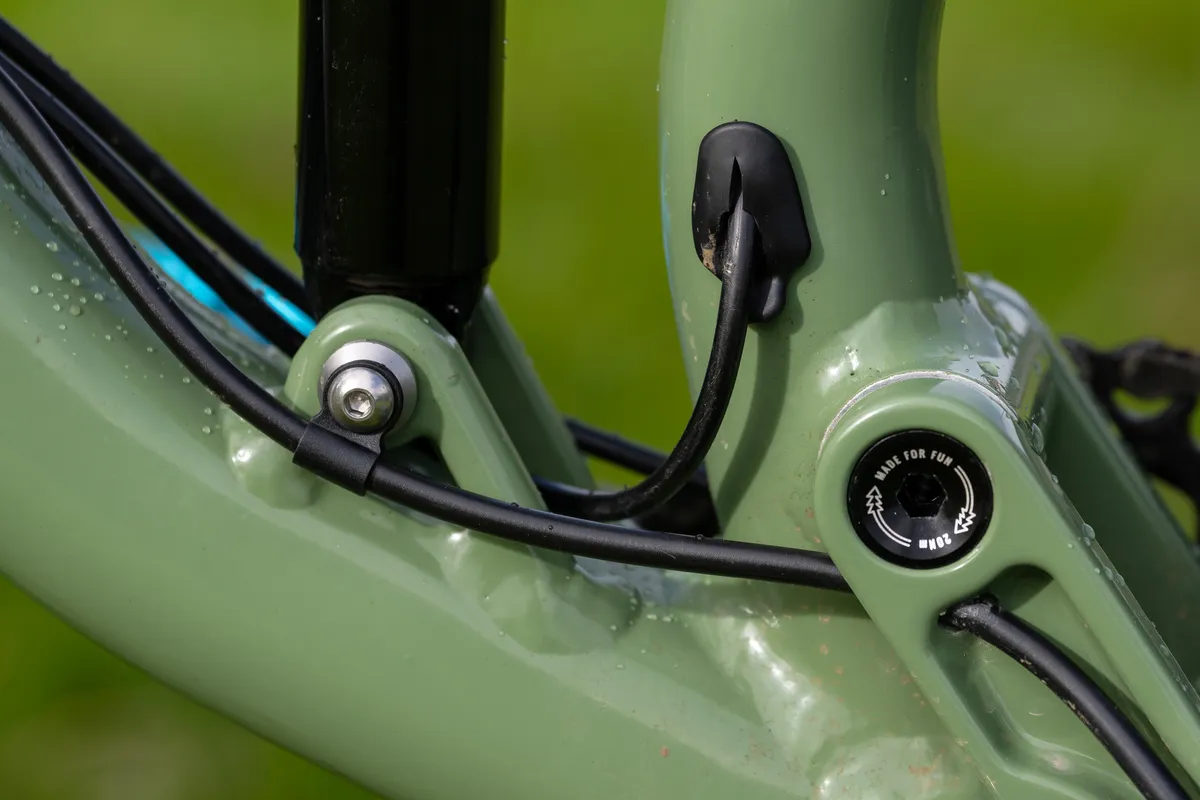
Cable management has also been improved between the front and rear triangles, where both the gear cable and brake hose now pass through a port next to the main pivot on the forged swingarm yoke.
The proximity to the main pivot axis means cable tug during suspension compression should be virtually zero.

Elsewhere, the Rift Zone now has robust chain slap protection and features SRAM’s Universal Derailleur Hanger (UDH). It uses a Boost 12x148mm rear axle and has a 73mm BSA threaded bottom bracket.
Suspension kinematics
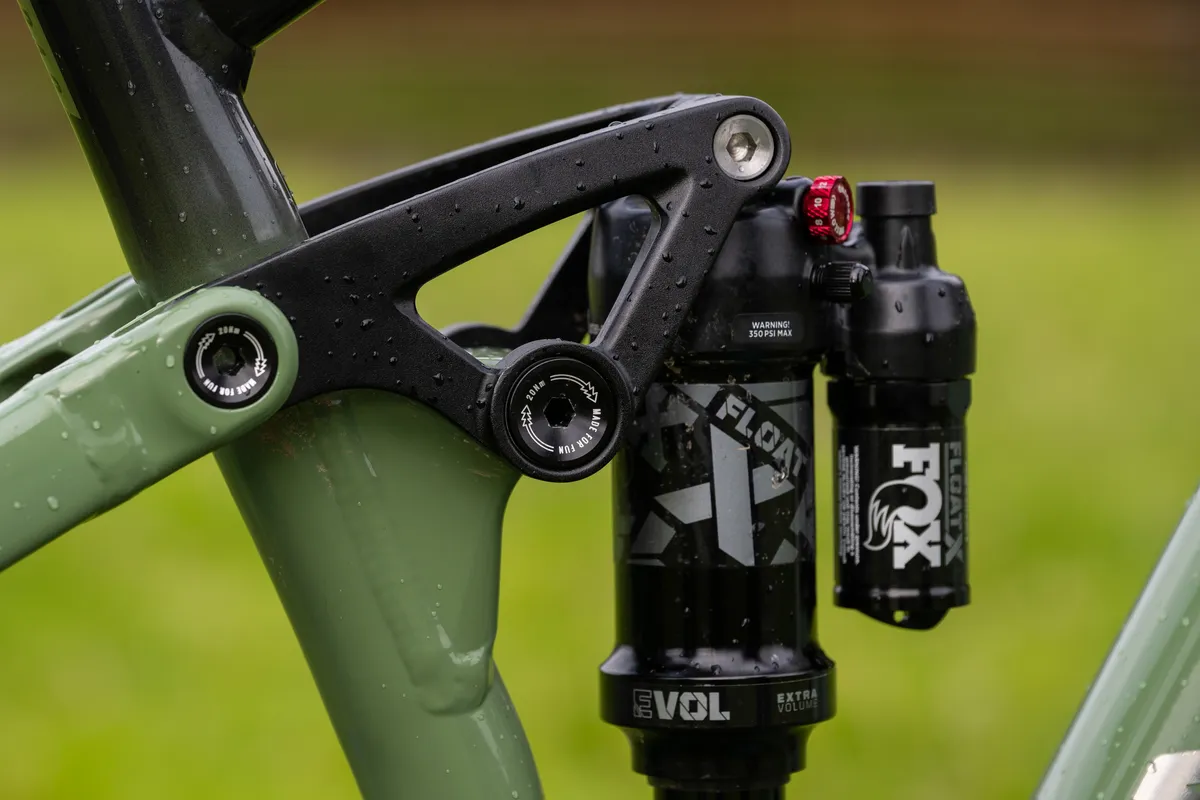
By tweaking the 130mm-travel Rift Zone’s leverage rate, Marin has made it more progressive. The bike is now just under 22 per cent progressive through its travel, which means it will be well suited to air-sprung, adjustable-volume shocks.
In adjusting anti-squat and anti-rise, Marin has further honed the way it rides. Anti-squat is around the 100 per cent mark at sag, which means the Rift Zone’s suspension should resist compression or extension caused by pedalling forces.
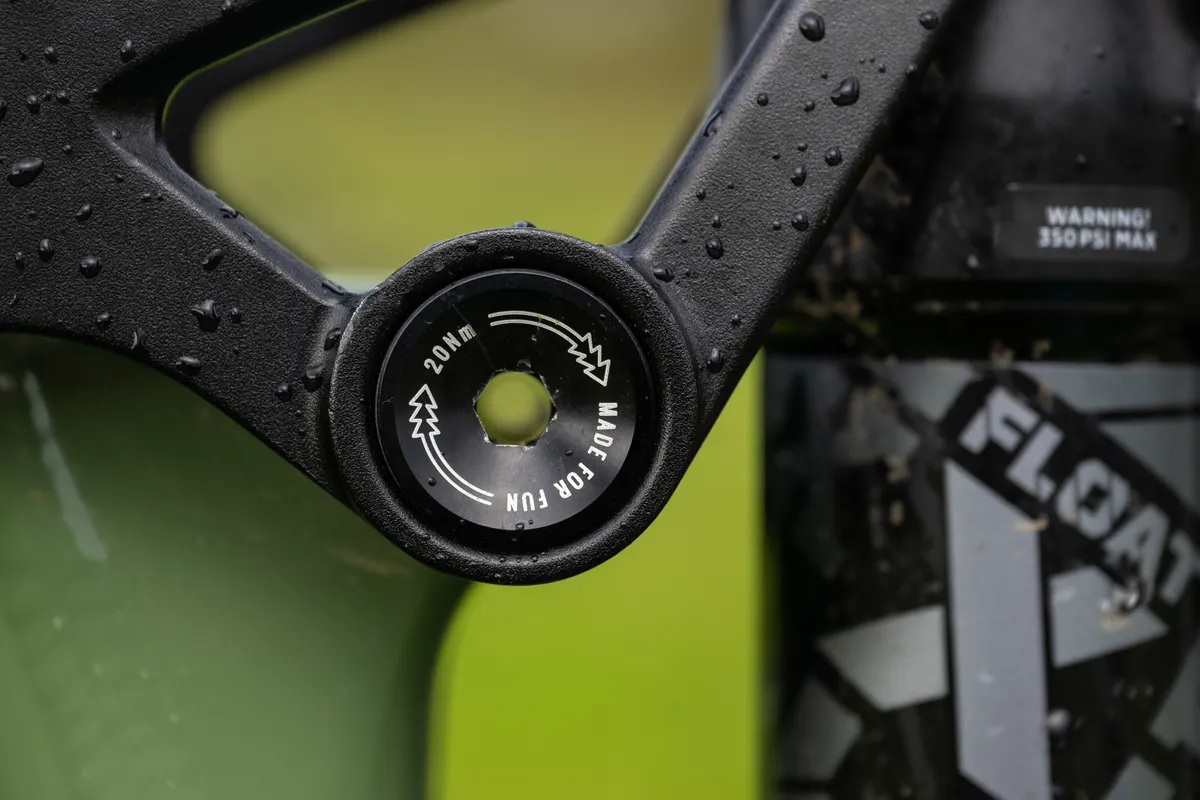
Anti-rise is also around 100 per cent at sag, which means the suspension should neither compress nor extend when the rear brake is applied.
Marin has custom-tuned the Fox Float X Performance rear shock to suit the Rift Zone’s kinematics. The brand says the tune should offer impressive small-bump performance without reducing that all-important mid-stroke support.
Marin Rift Zone 29 XR geometry
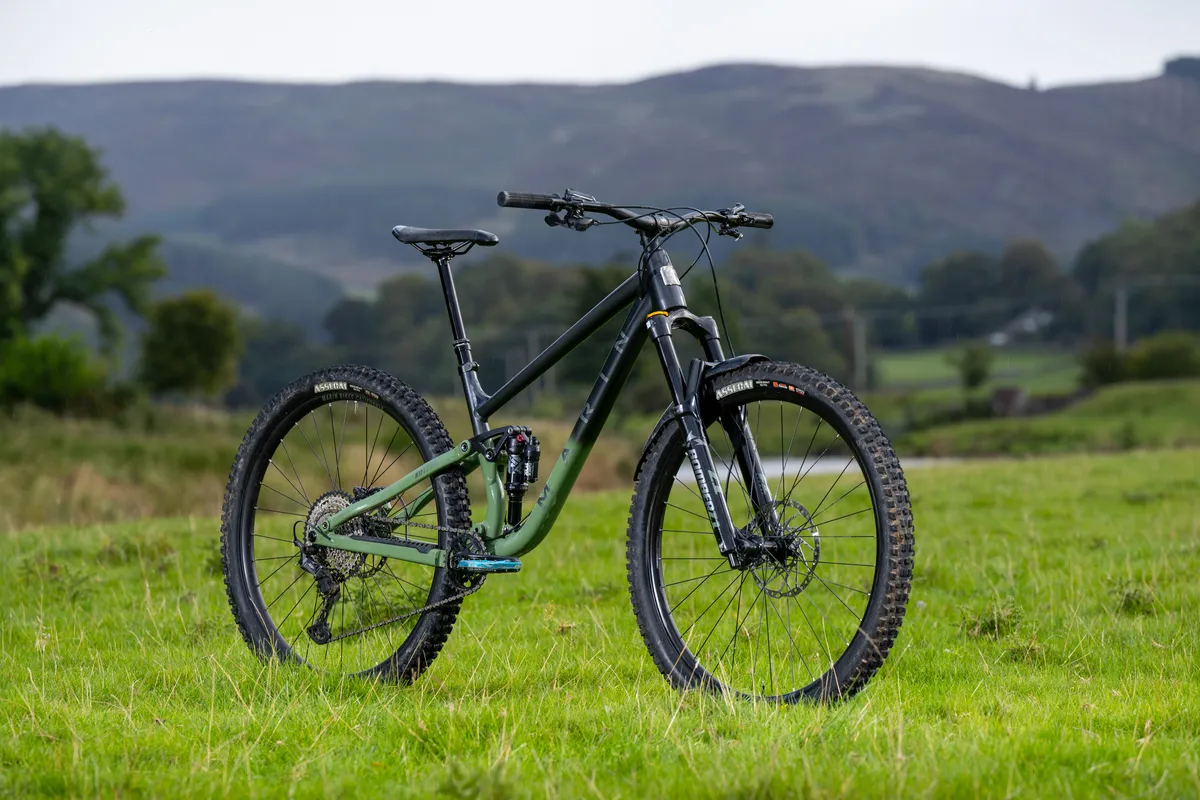
Key updates to the Rift Zone’s geometry help bolster its contemporary trail bike feel without straying too far from the predecessor’s loved recipe.
| Size | Small | Medium | Large | Extra-large |
|---|---|---|---|---|
| Head angle (degrees) | 65.5 | 65.5 | 65.5 | 65.5 |
| Seat tube angle (degrees) | 77 | 77 | 77 | 77 |
| Seat tube length (mm) | 390 | 400 | 425 | 430 |
| Effective top tube length (mm) | 579 | 605 | 632.1 | 663.2 |
| Bottom bracket height (mm) | 343 | 343 | 343 | 343 |
| Standover height (mm) | 690.2 | 691.2 | 701.7 | 700.5 |
| Wheelbase (mm) | 1,170 | 1,205.1 | 1,235.4 | 1,266.3 |
| Chainstay length (mm) | 430 | 430 | 430 | 430 |
| Stack height (mm) | 623.6 | 628.2 | 637.3 | 641.8 |
| Reach (mm) | 435 | 460 | 485 | 515 |
Headline figures for the size large include a 65.5-degree head angle, a 77-degree seat tube angle and a 485mm reach. It has 430mm chainstays and a 1,235.4mm wheelbase.
Marin Rift Zone 29 XR specifications

As the range-topping Rift Zone, the XR does Marin’s budget-friendly reputation justice by offering high-performing but carefully specced components that balance price and function.
Out front is a 140mm air-sprung Marzocchi Bomber Z1 fork fitted with the same GRIP damper as Fox’s Performance forks. It’s matched with a custom-tuned Fox Float X Performance rear shock.

It has a Shimano M8100 XT derailleur matched with a M7100 SLX shifter and cassette, and an FSA crankset and KMC chain.
Own-brand Marin wheels, bar, stem and saddle feature, along with its all-new Grizzly Grips that have a thumb indentation.
Those Marin wheels are wrapped in Maxxis Assegai MaxxTerra EXO casing rubber front and rear.
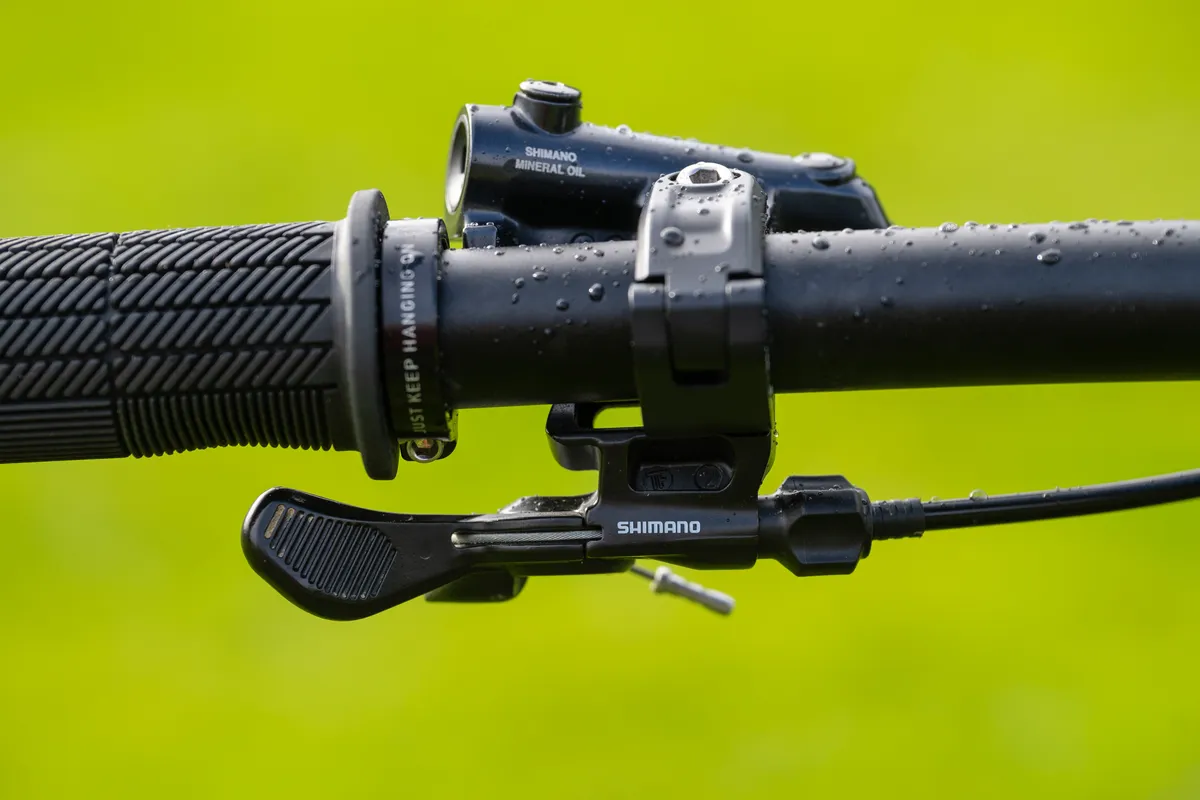
A TranzX YSP23JL 170mm-travel dropper post with a 1x-style I-Spec-mounted remote is fitted.
The size-large test bike without pedals weighed 15.47kg on my scales.
Marin Rift Zone 29 XR ride impressions
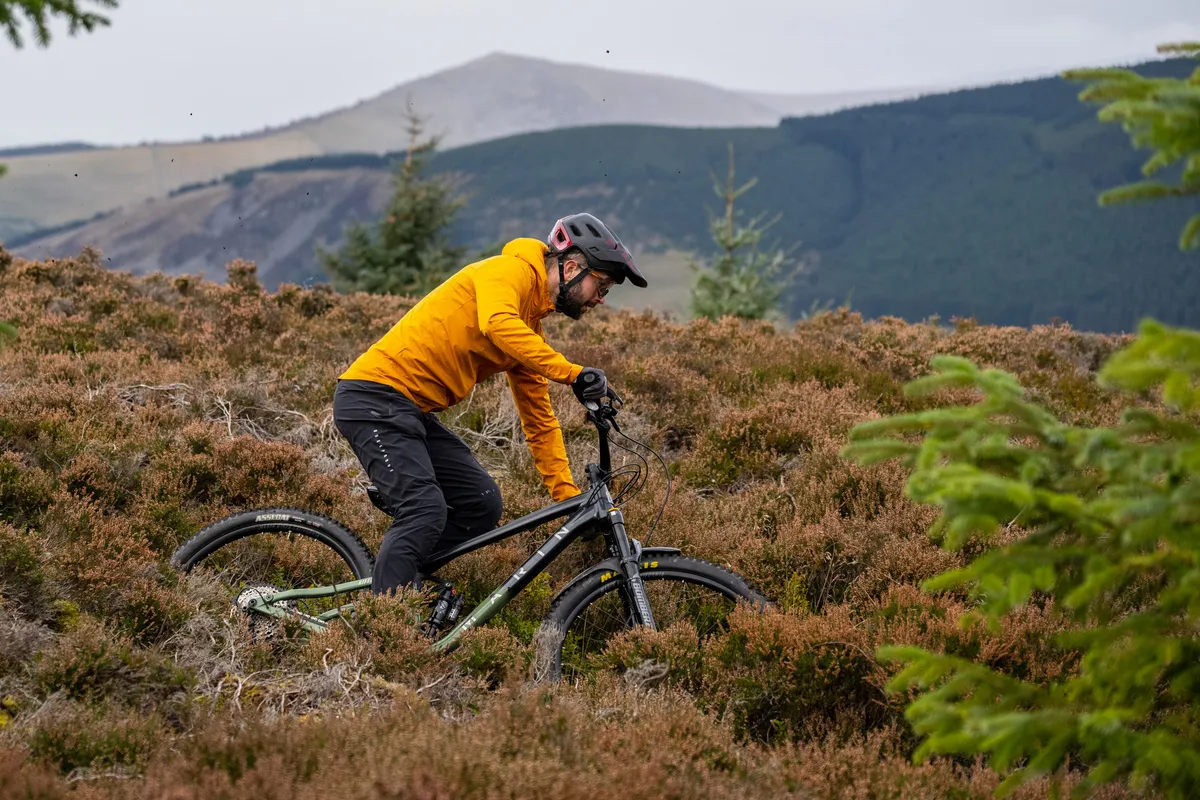
I rode the Rift Zone 29 XR on my home trails in Scotland’s Tweed Valley, host to the UK’s round of the Enduro World Series and the upcoming 2023 cross-country world championships.
Taking the bike on a variety of trails, from natural off-piste runs, bridleways and singletracks along open moorland to purpose-built trail centre runs typical of Glentress helped me get a solid idea of how Marin's 2023 Rift Zone rides.
Marin Rift Zone 29 XR setup
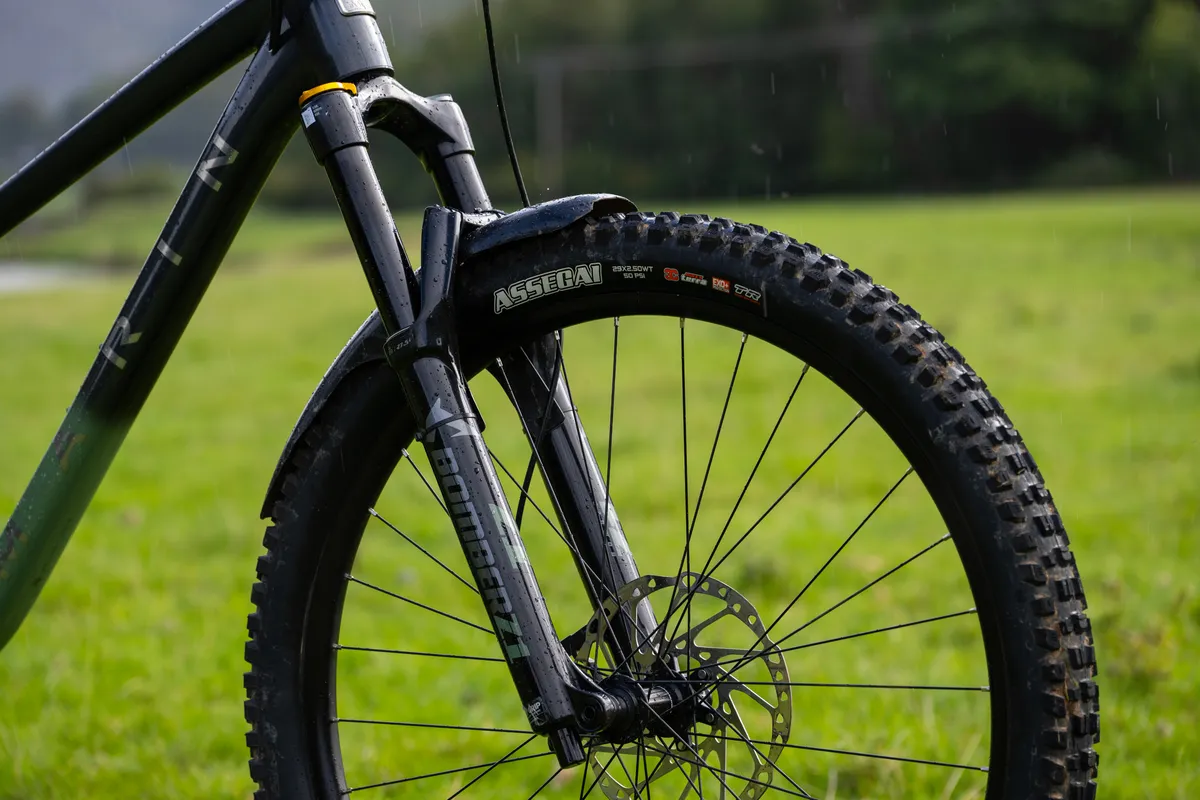
The Fox Float X shock was easy to set up. I fully opened the rebound adjuster and inflated the air spring to 170psi, leaving the stock number of tokens in the air chamber. This gave me 15mm, or exactly 30 per cent sag, which is Marin’s recommended amount. I left these settings unchanged for the duration of the test period.
Dialling in the forks was a bit trickier. While the damper’s sweep adjustment dial means it feels best when it’s fully open, and the rebound adjuster has a wide range so it can be set for many different preferences, the low-volume air spring adds complication.
To get the fork feeling as supple as I was expecting, I had to incrementally decrease spring pressure beneath the 75psi recommendation down to 60psi.
At this pressure, it felt smooth and absorbent on chattery terrain. I also added one additional volume-reducer spacer, taking the total count to five up from the factory-installed four. At 60psi, I had 20mm, or 14.29 per cent, sag.
Marin Rift Zone 29 XR climbing performance
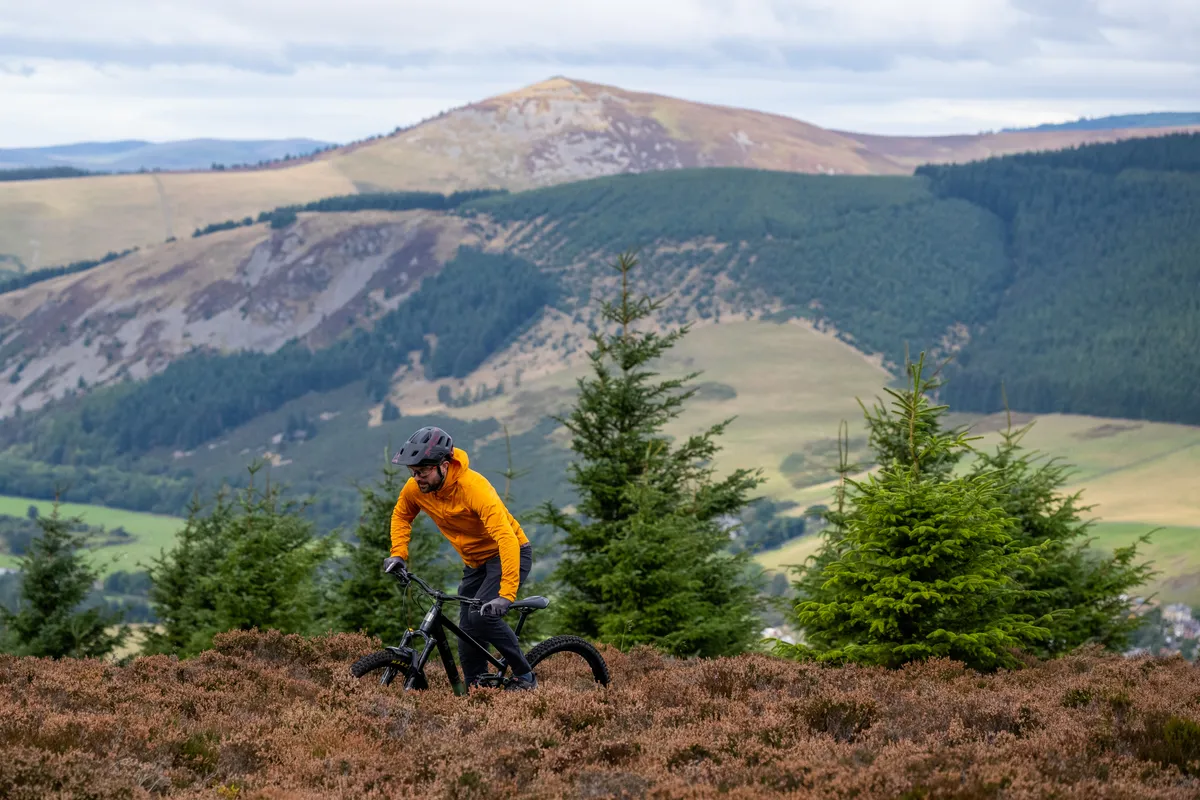
There’s no shortage of comfort on the Rift Zone, where the rear suspension works overtime to smooth out high-frequency bumps such as trail chatter or embedded rocks.
The rear shock’s light tune plays a large role in the rear end’s easy-going action, where there’s very little resistance equating to fluttery compression, and the quick-returning rebound helps keep the rear wheel tracking the floor.
Along with comfort, suspension-generated grip is also abundant. This makes sticking trickier lines on ascents – such as off-cambers or when riding over root carpets – much easier and more controlled.
But it's the on-the-gas suspension action that impresses me the most. Pedalling forces don’t neutralise the suspension’s ability to track the terrain, as it can do on some bikes.
Of course, at lower cadences when pedalling out of the saddle, there is some pedal bob – as there is on any mountain bike – but when seated there’s little unwanted movement.
This makes the Rift Zone feel pretty responsive.
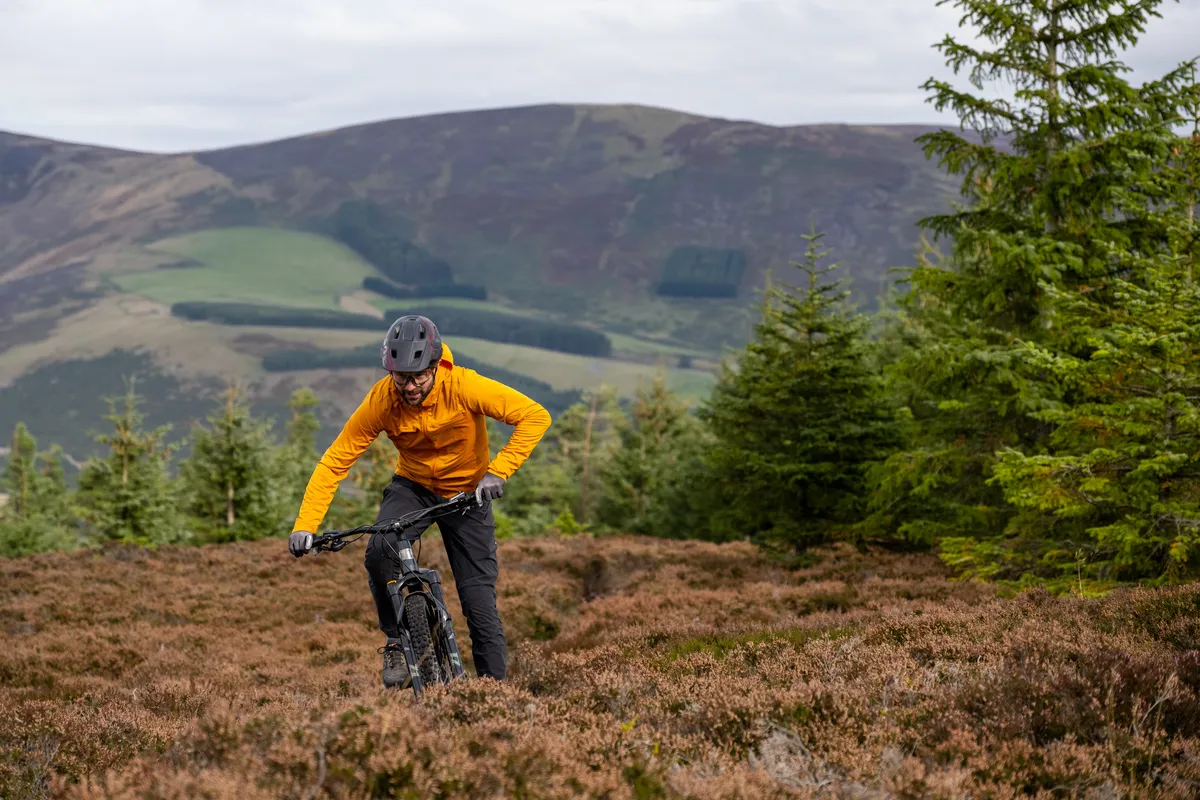
Combined with the impressive comfort, it eggs you on to ride harder and faster because it doesn’t tire you as quickly as lighter, rougher-feeling bikes.
For that reason, it defies its headline weight figure well. On paper, at over 15kg, the Rift Zone is heavier than some of the best enduro bikes, but don’t let that worry you; it's no slouch.
The fast-rolling MaxxTerra compound tyres certainly help it shift along.
Its geometry also contributes, with the steep 77-degree seat tube angle giving it a winch-and-plummet, upright seated climbing position that helps with efficiency.
Thanks to the roomy 632mm top tube, your weight is spread relatively evenly between hands and feet, reducing the chances of soreness.
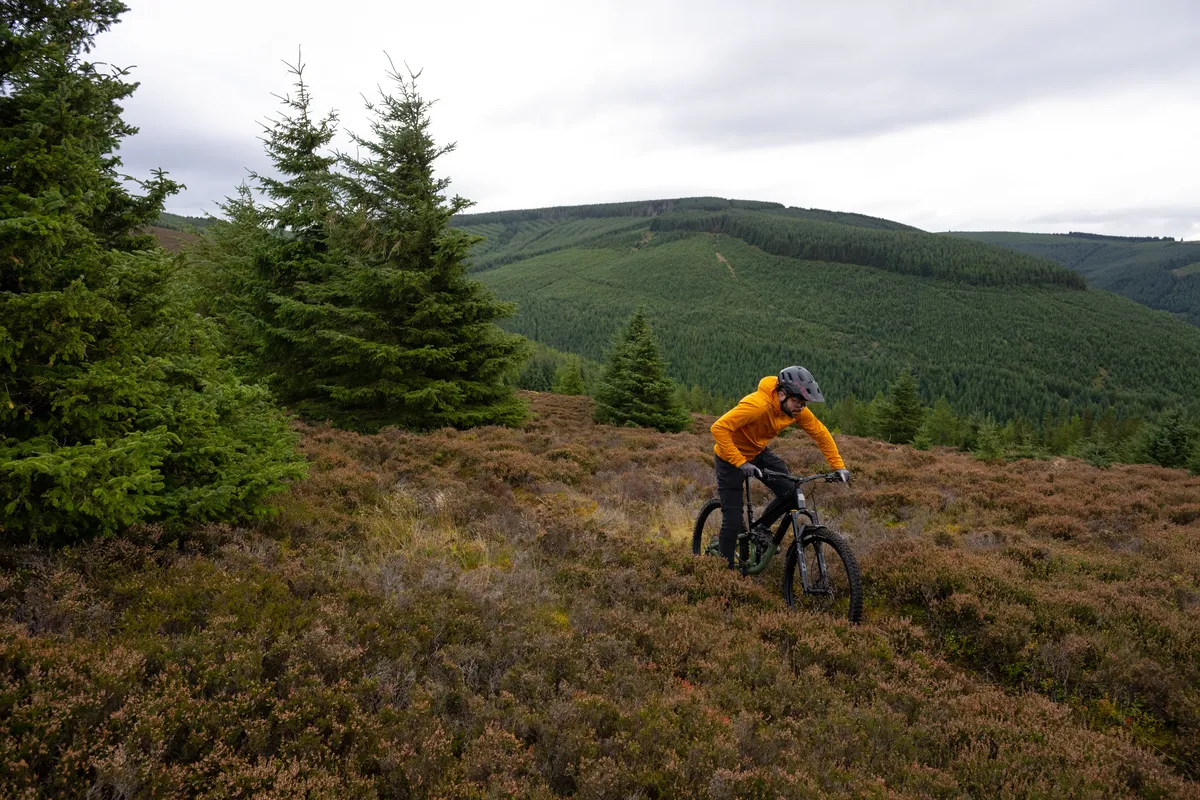
This helps when you want to climb harder and faster, and makes lowering your weight over the bars to get in an aggressive position more intuitive compared to upright enduro bikes.
On steeper ascents, balancing traction and front-wheel lift isn’t an onerous task. The geometry positions your body centrally where large, overt movements aren’t needed to keep the front wheel from wandering or the back one from spinning.
Finally, the rear suspension’s progressive kinematics and in-built spring progression help maintain the Rift Zone’s geometry on steeper ascents, working with, not against the fluttery beginning stroke of the shock.
Marin Rift Zone 29 XR descending performance
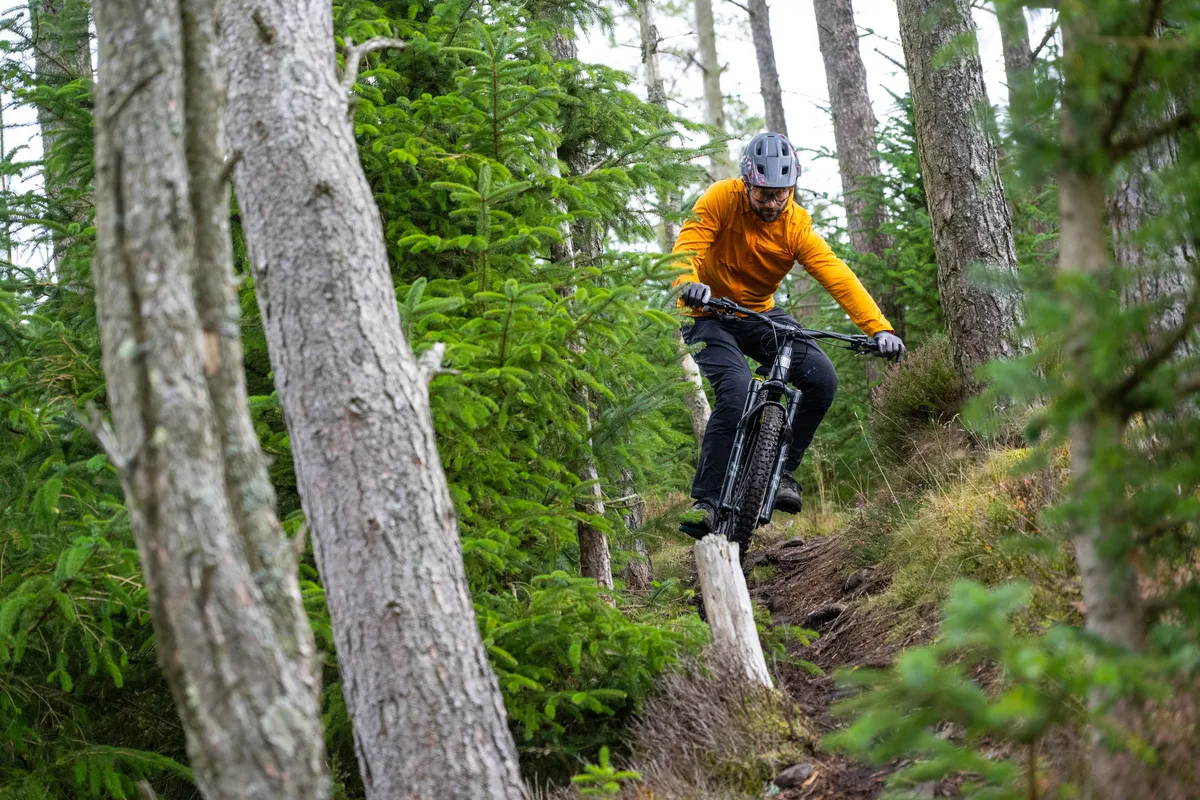
The Rift Zone feels comfortable riding seriously chunky terrain with impressive composure, exuding a bruiser-like ride quality.
It feels best when it’s first pressed and pushed into the dirt to drive grip and speed or to change direction, and then popped off the ground using the suspension's supportive mid- and end-stroke.This style or technique of riding makes it light and fluttery over the next section of rough terrain.
On undulating, pumpy trail-centre tracks, the suspension-induced support and stability feels great and helps generate speed and rip turns. Loading the bike up or pushing hard into a corner produces a corresponding increase in speed, without feeling overly soft.
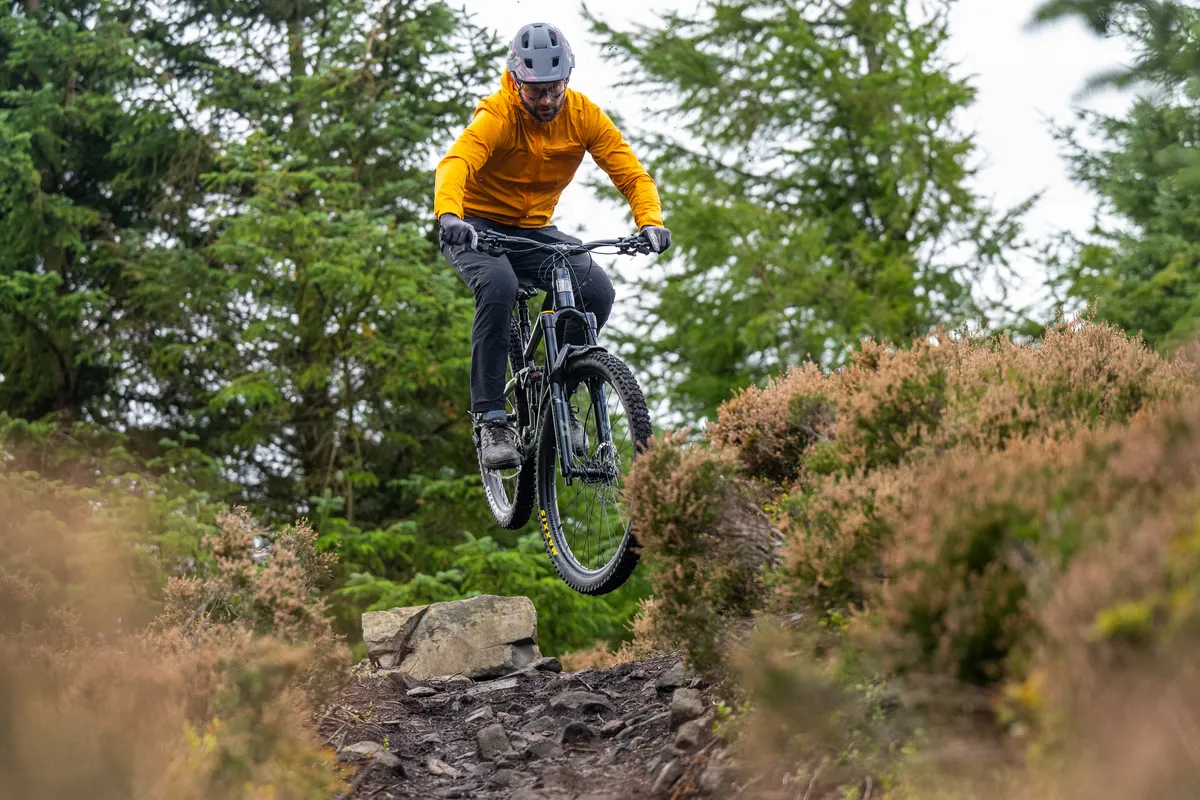
That suspension support is also helpful on jumps or harsher landings. It’s possible to push into the face of take-offs to boost high into the air, but there’s also plenty of bottom-out resistance for bigger landings to flat.
Combining the air shock’s spring curve and suspension’s kinematics means it’s possible to have your cake and eat it; running it soft enough to feel smooth on smaller bumps and provide grip doesn’t compromise end-stroke control.
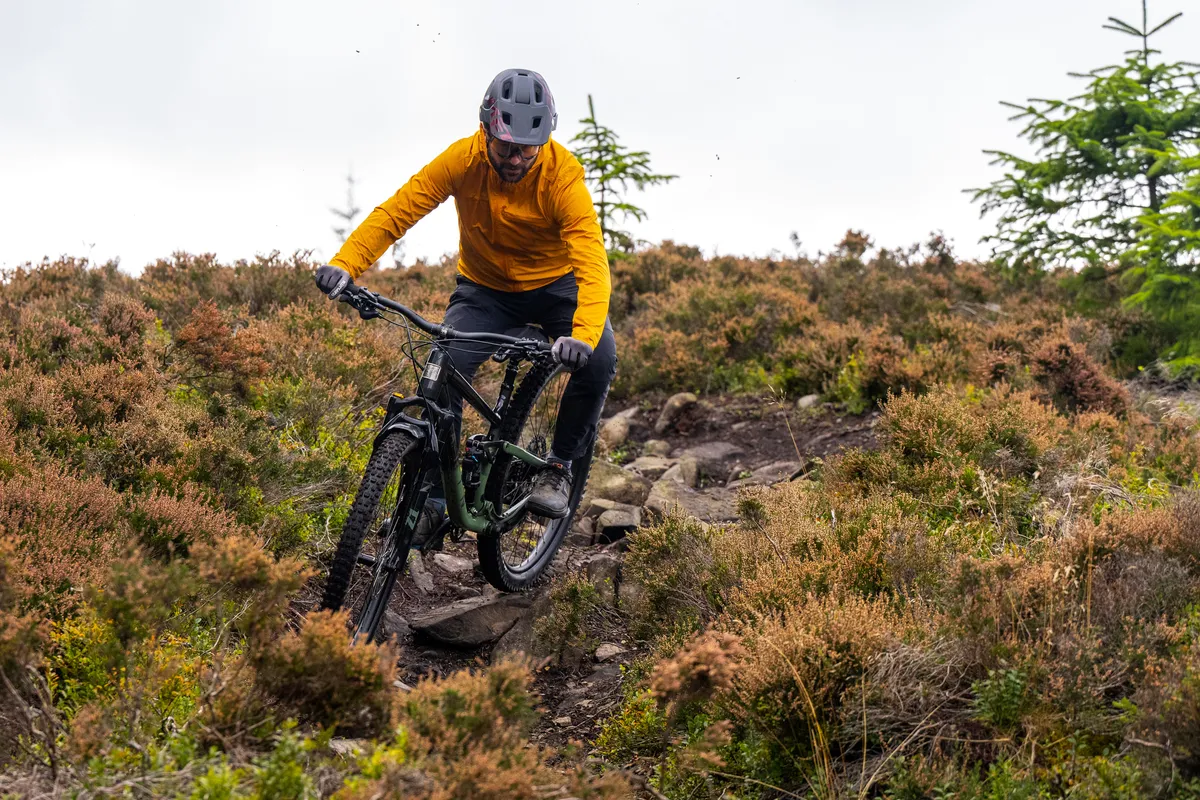
Once I’d settled on the fork’s lower-than-recommended spring pressure and increased the number of volume-reducer spacers, I was impressed with their performance. Small-bump absorption is as good as the pricier Fox 36 EVOL air-spring fork, while ramp up support and bottom-out resistance are equally impressive.
The GRIP damper offers a wider range of usable rebound adjustment than the more tunable and expensive GRIP2 offering, and arguably the compression damping feels less choked.
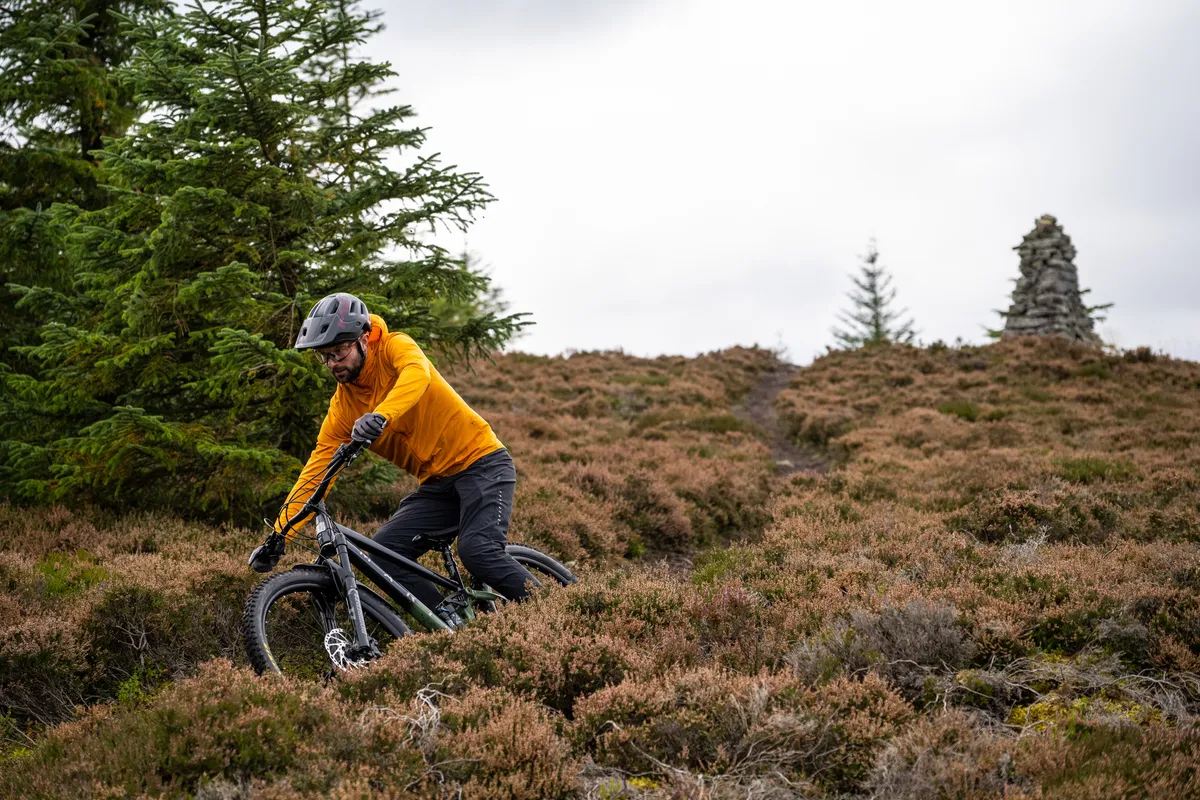
It’s the same story with chassis support. The Z1 shares its design with Fox’s 36, which has been proven on the Enduro World Series stage. There are, clearly, no complaints with stiffness on the short-travel Rift Zone.
While its geometry isn’t ground-breaking, it does a great job of balancing the playful feel of a trail bike with the stability needed to tackle harder, gnarlier terrain.
The masterful front-to-back balance bolsters the bruiser-like nature of the suspension where multiple, successive hits don’t have a huge effect on the bike’s stability. This means there’s no choppiness, or excessive rising or falling of the front or rear end.
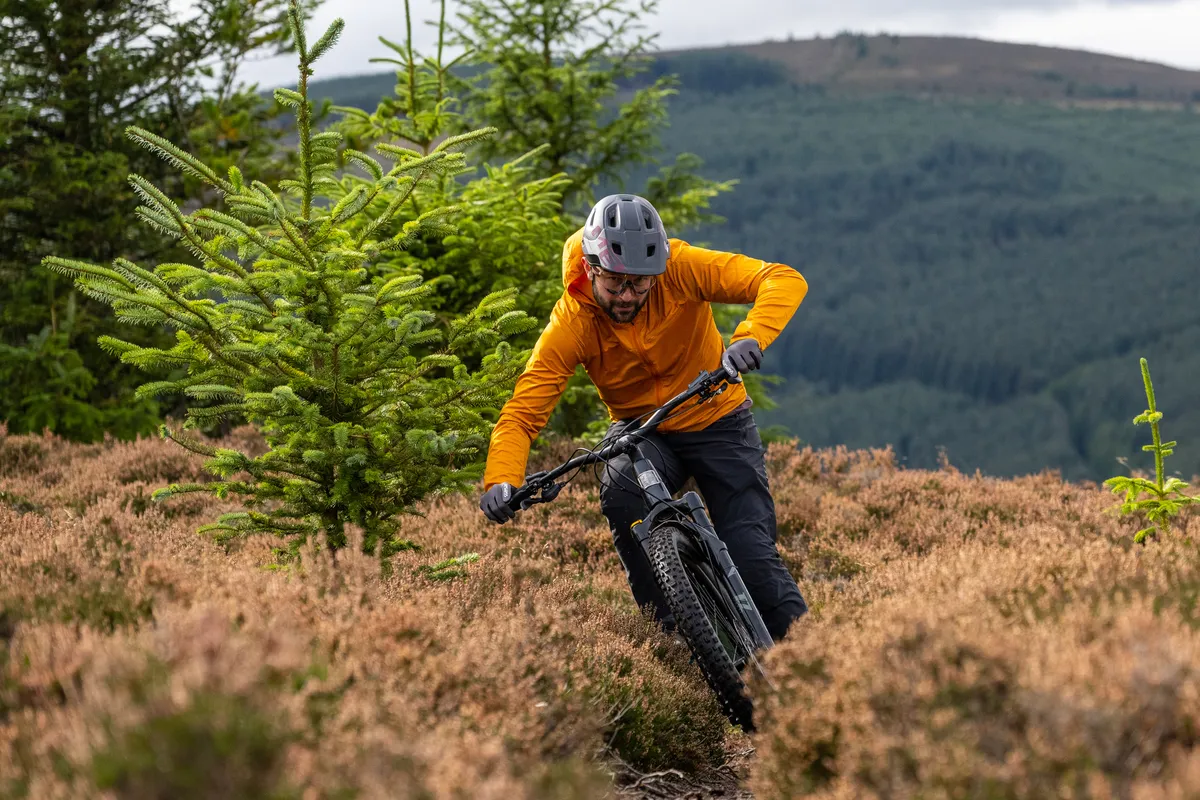
On steep, rough terrain, this makes it feel muted and controlled, and helps it defy its 130mm travel figure where it has more go than you’d expect.
There’s a real smooth calmness to the way it rides, which encourages you to go quicker.
Of course, it has its limits, but which 140/130mm-travel trail bike doesn’t? In that vein, it would be unfair to expect the Rift Zone to tackle extreme enduro or downhill trails at high speed.
How does the Marin Rift Zone 29 XR compare to the Santa Cruz 5010?
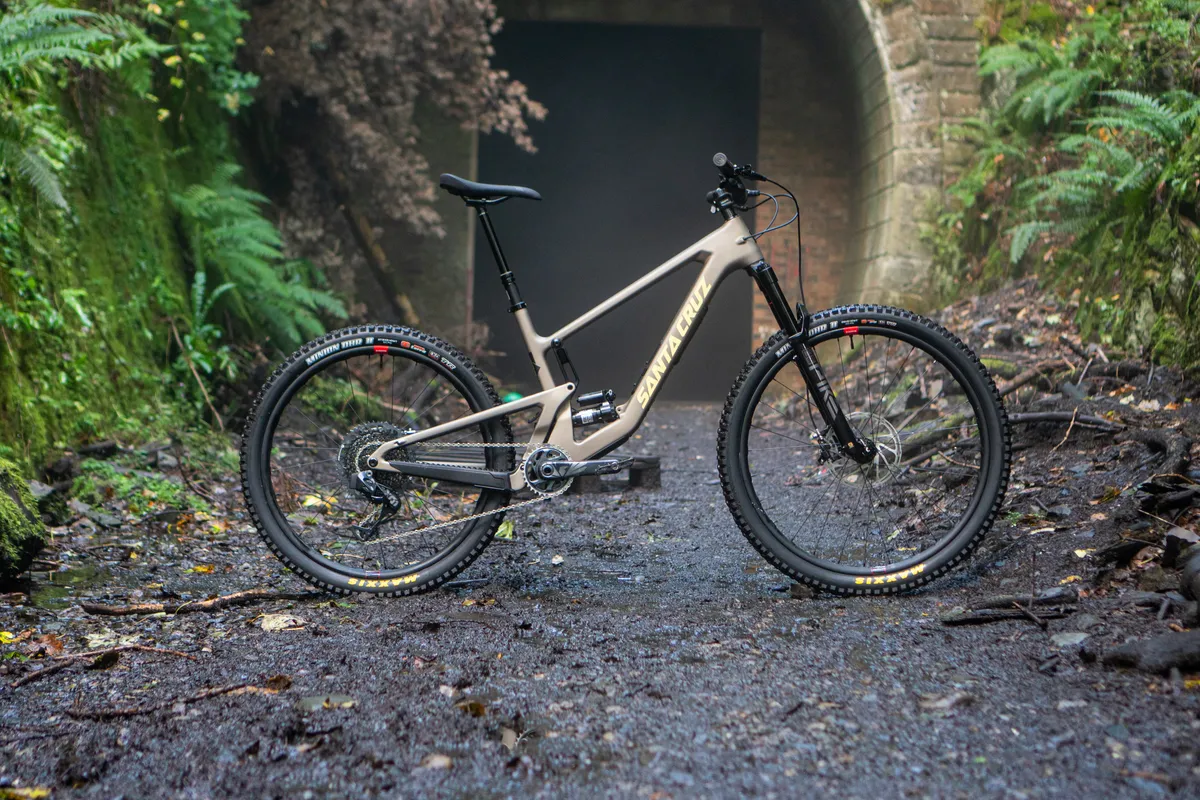
Santa Cruz’s 5010 shares the Rift Zone’s 140mm fork and 130mm rear end, but instead of offering models with 27.5in or 29in front and rear wheels, it runs a mullet setup (29in front, 27.5in rear).
The two bikes have similar geometry, with the 5010’s adjustability giving it a slightly slacker head tube angle (64.9 degrees), slacker seat tube angle (76.8 degrees) and longer chainstays (437mm). The 5010’s wheelbase is 4.6mm longer at 1,240mm.
Reach figures are also close, with the Marin having an 11mm bigger cockpit compared to the large 5010 in its low position (476mm).
Despite the geometry similarities, the two bikes feel very different out on the trails.
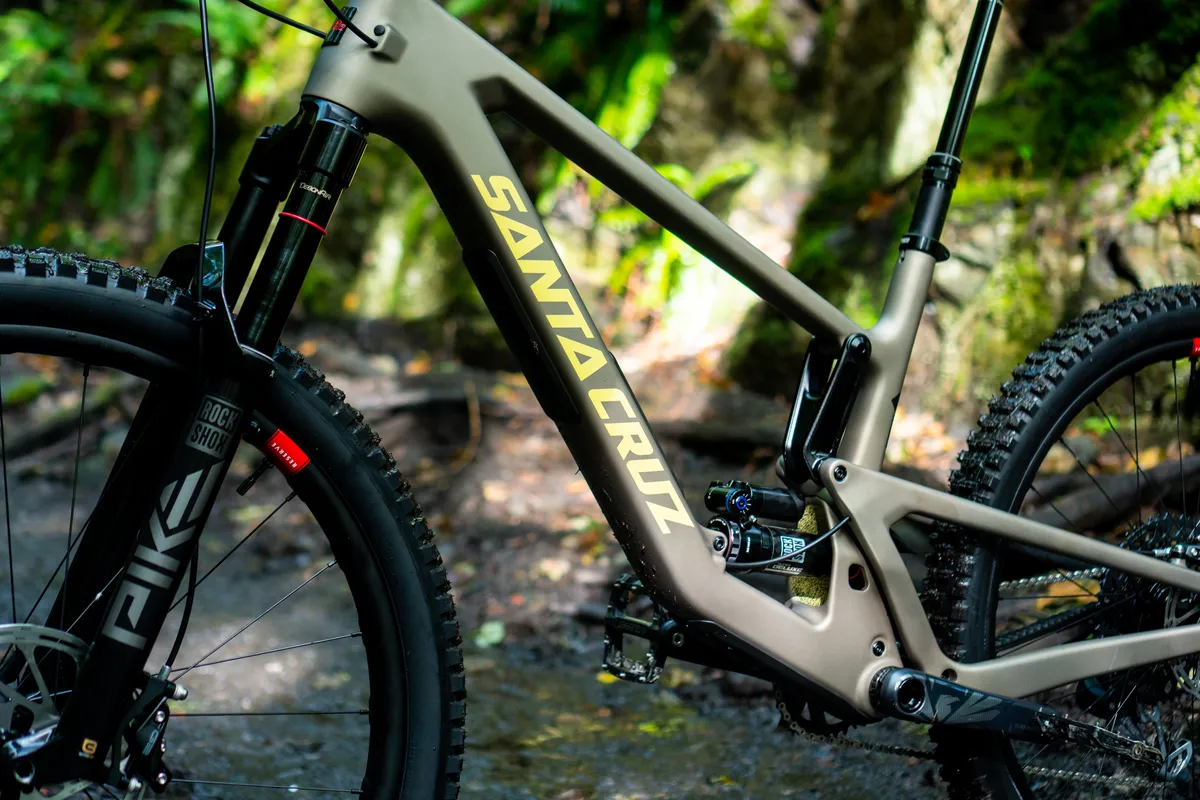
The 5010’s mullet wheel setup clearly has the biggest influence, where it has a lively, quick and sharp streak in the way it rides. In fact, trying to stop the rear end from breaking traction is trickier than controlling a slide once it inevitably happens.
In contrast, the Rift Zone is easier to carve smoother, rounded arcs, where drifting is possible, but won’t happen as spontaneously or as quickly as the 5010.
A reduction in bump rollover created by the 5010’s smaller back wheel also gives it a rawer, harsher feel in chunkier terrain. This limits outright speed potential, where reducing pace is the only way to claw back control.
Letting speeds run higher for longer in gnarlier terrain is less hair-raising on the Rift Zone.
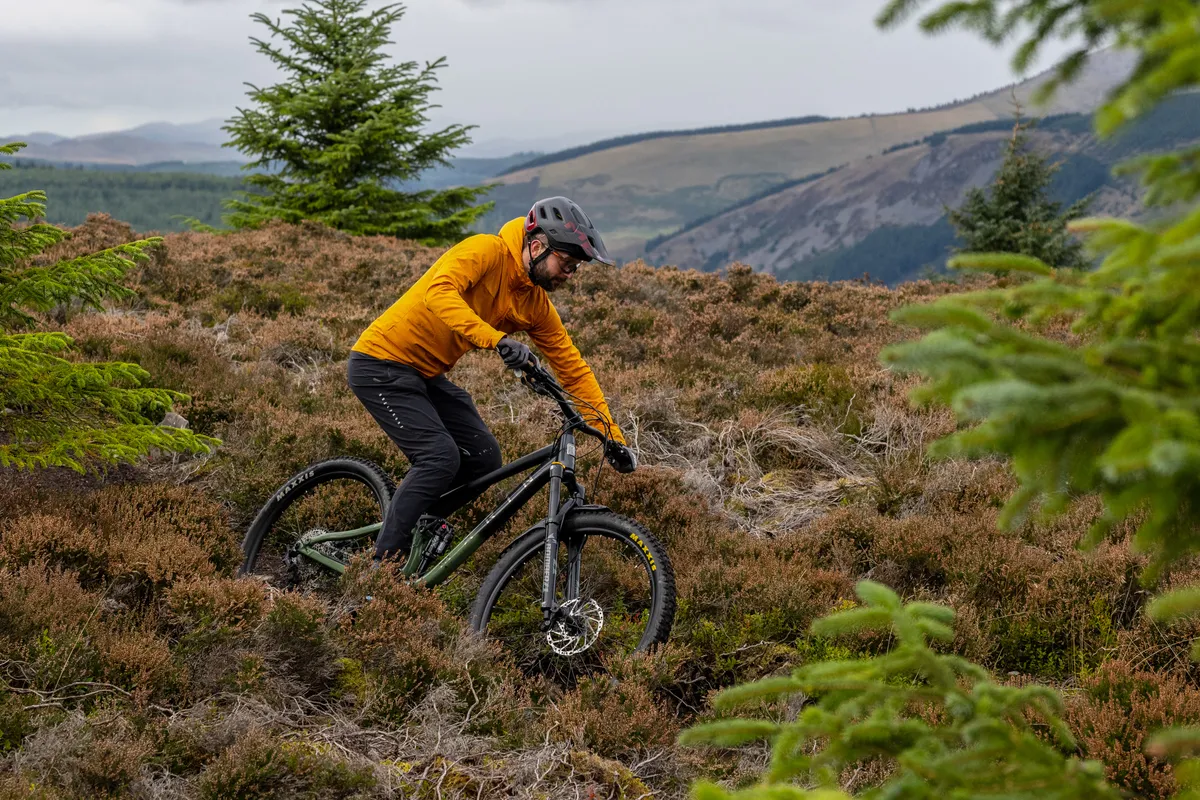
The 29in-wheeled Santa Cruz Hightower might be a better adversary for the 29er Rift Zone, but in shifting the 5010 to a mullet configuration Santa Cruz has promised the “traction and stability [of a 29er and] quick back wheel steering [of] a 27.5in”, essentially putting it in the same category as Marin’s 29in and 27.5in-wheeled Rift Zones.
In offering dedicated 29in and 27.5in Rift Zones, Marin has catered for the high-paced trail rider and jump-focused jibbers without having to make the handling compromises (speeding up the handling of 29in-wheel bikes or slowing down the handling of 27.5in-wheel bikes) that are commonplace on mullet setups.
Marin Rift Zone 29 XR performance details
- Silent running: Thanks to the Marin’s new cable routing and chunky chain slap protection, the Rift Zone was utterly silent on the descents. The lack of noise helps reduce distractions and gives the bike a truly premium feel.
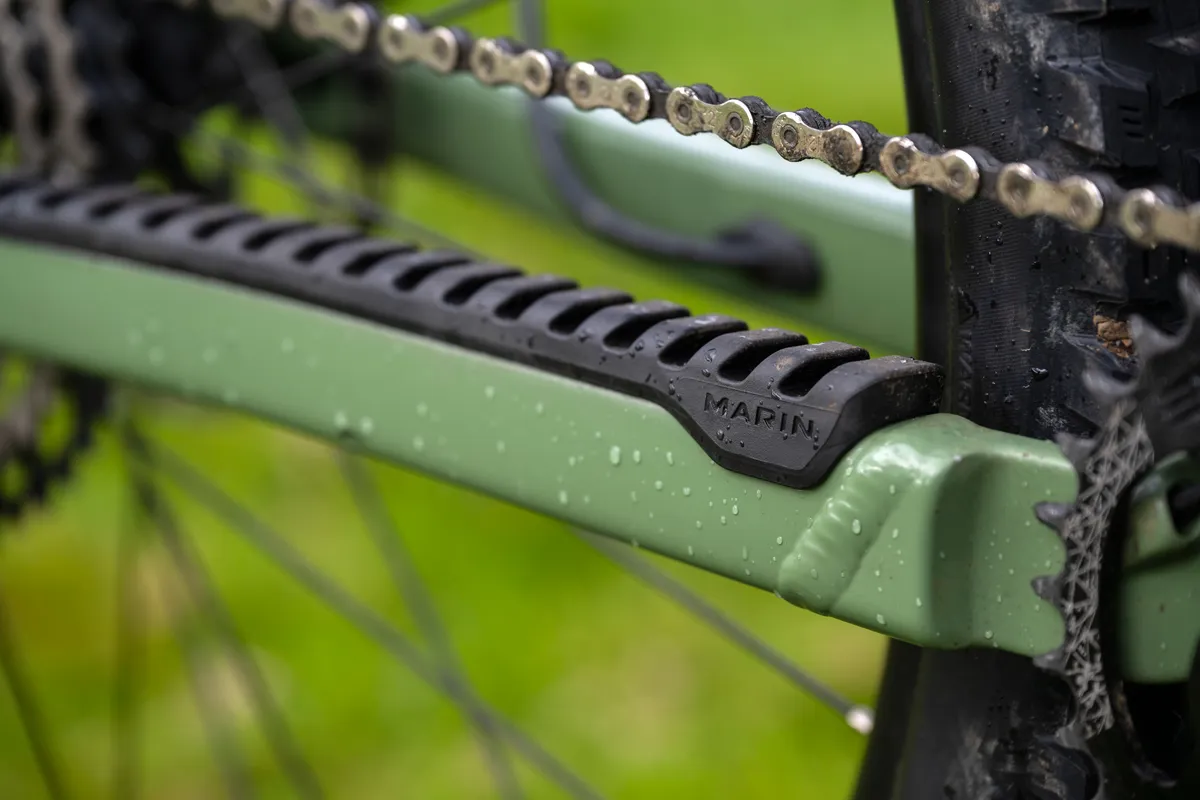
- MaxxTerra compound tyres: Maxxis’ second-grippiest rubber specced on the Rift Zone is suitable for most trails and terrain types, and its fast-rolling characteristics are certainly appreciated on the climbs. However, I couldn’t help thinking speccing a stickier MaxxGrip front tyre would only improve the bike, bolstering its massively capable descending performance. Changing tyres is a relatively inexpensive upgrade, and if you’re focused on descending performance or want outright traction, it’s a change worth investigating.
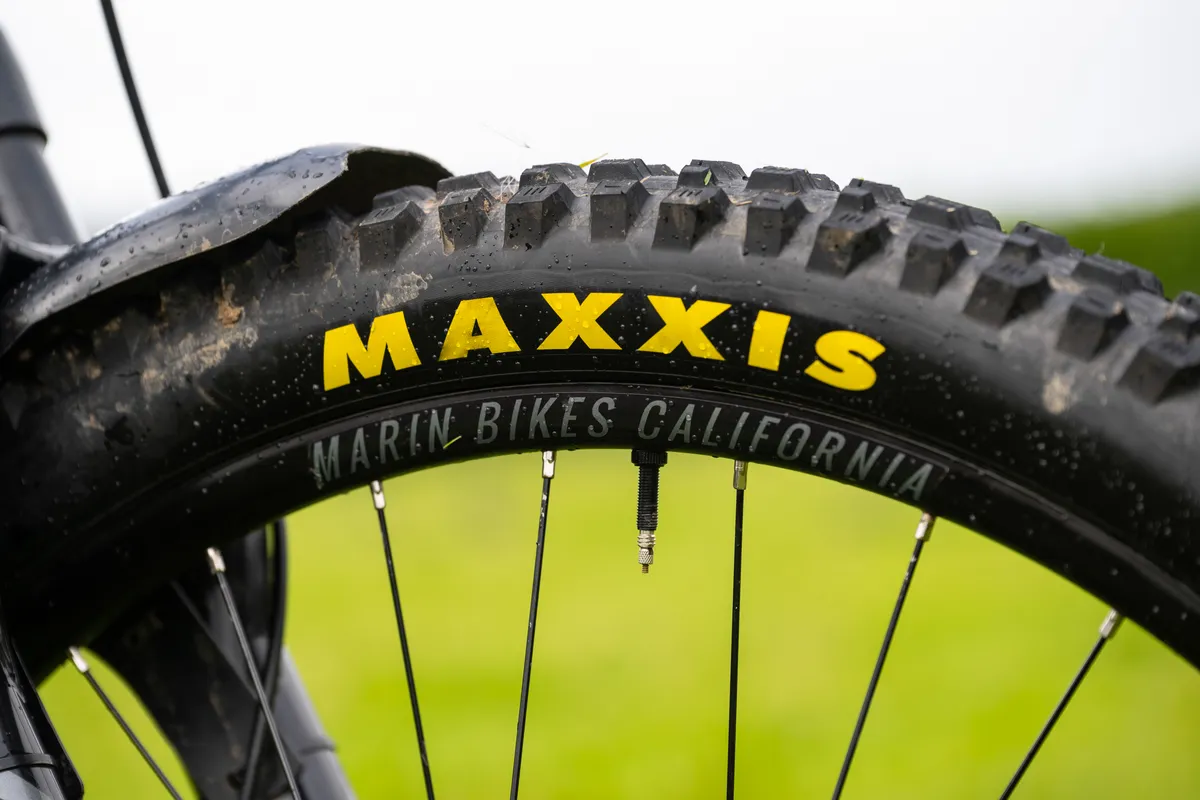
- Braking power: Although Shimano’s MT420 calipers and M4100 levers aren’t the most technologically advanced, they are immensely powerful and well suited to the Rift Zone’s capabilities.
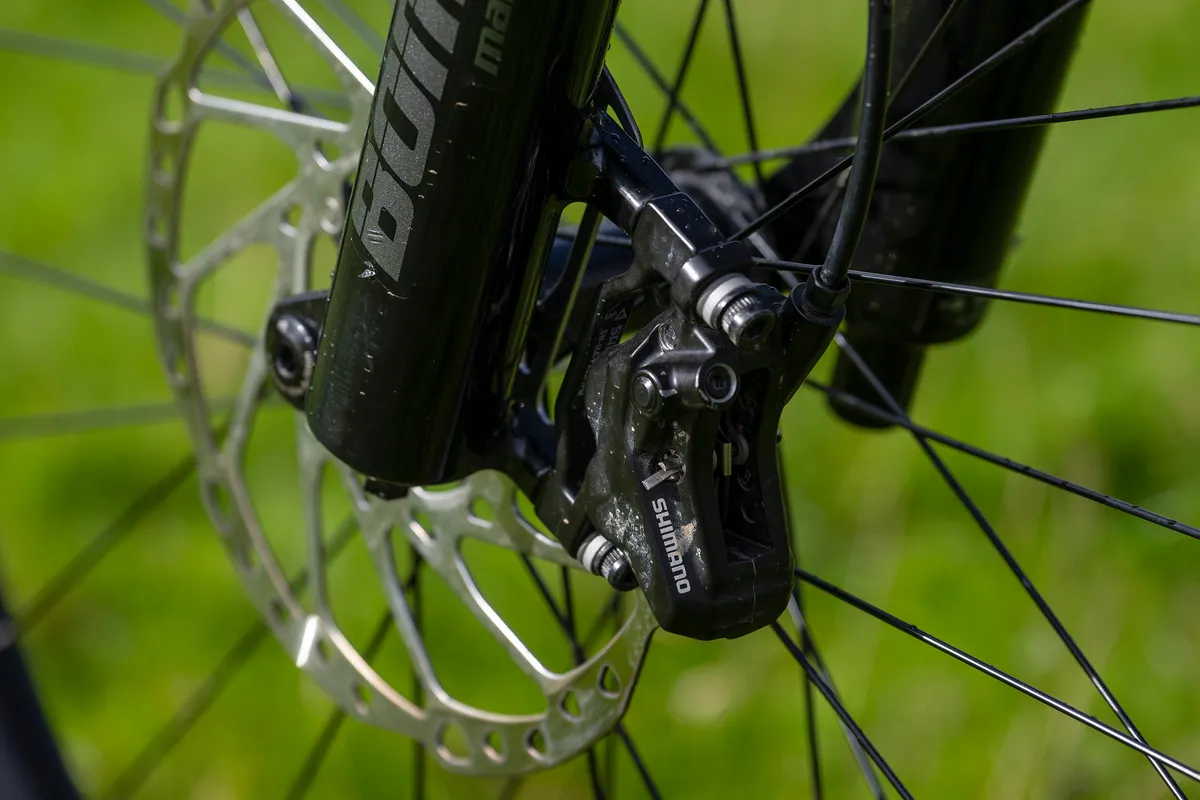
- Long drop: It’s great to see dropper post travel increase with frame size, and the 170mm post on the size large I tested had ample drop, so the seat could be set comfortably to its extended and compressed positions without any manual adjustment.
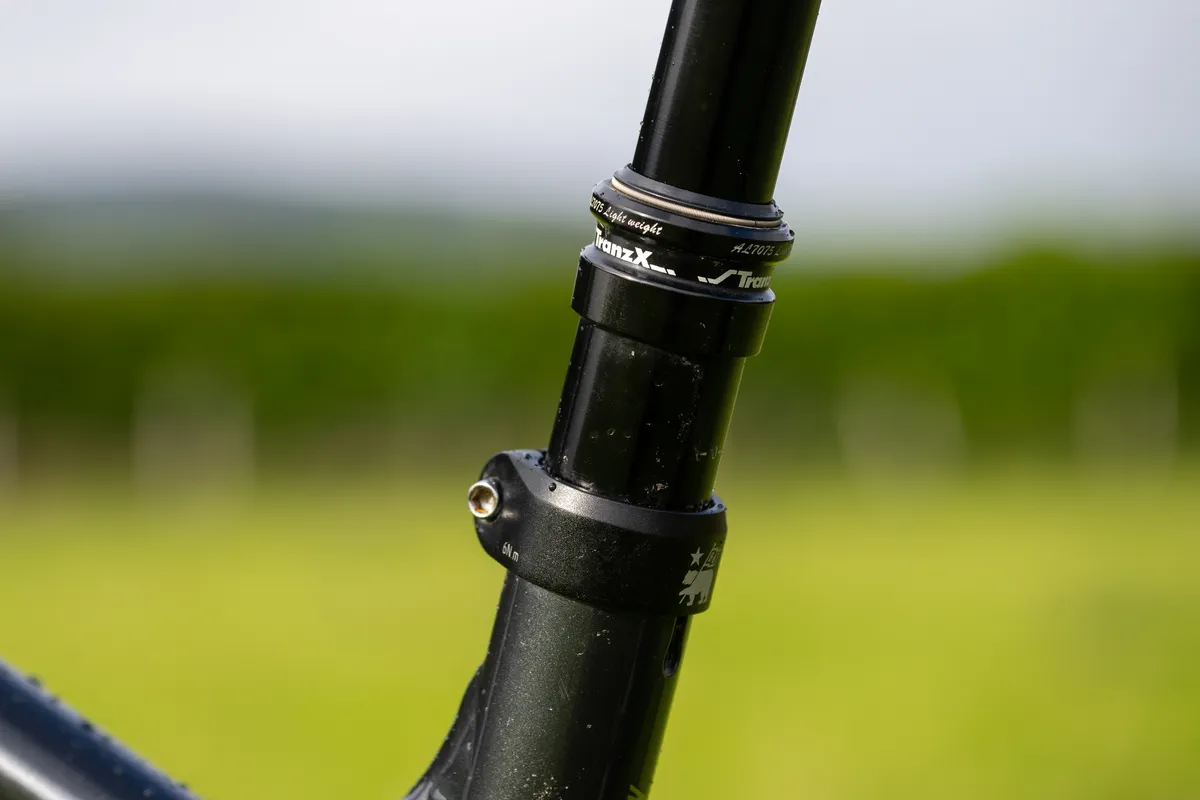
Marin Rift Zone 29 XR bottom line

There’s much to love about the 2023 Rift Zone 29 XR.
From its capable suspension, balanced geometry, comfortable and grippy ride through to its spec and price, it appears to perform on almost every level.
Whether I was riding pumpy, fun or tame trail centre loops, tackling gnarlier enduro-style descents or heading out into the backcountry, the Rift Zone proved to be a worthy all-rounder and great partner.
But rather than being a jack of all trades and master of none, its engaging, fun and adept handling meant it tamed the widest variety of trails and terrain types without flinching.
If you’re looking for a budget-friendly, top-performing trail bike, the Rift Zone XR has to be one of the top picks
Product
| Brand | marin |
| Price | 3499.00 EUR,2995.00 GBP,3499.00 USD |
| br_whatWeTested | 2023 Marin Rift Zone 29 XR |
| Weight | 15.4700, KILOGRAM (Large) - Size large without pedals |
Features
| Fork | Marzocchi Bomber Z1 |
| br_stem | Marin |
| br_chain | KMC X-12 |
| br_frame | Series 3 6061 Aluminium |
| Tyres | Maxxis Assegai MaxxTerra EXO 29x2.5in (front and rear) |
| br_brakes | Shimano BL-M4100 levers with BR-MT420 callipers |
| br_cranks | FSA Grid, 32t chainring |
| br_saddle | Marin Speed Concept |
| br_wheels | Marin Aluminium Double Wall rims on Forged Alloy hubs |
| br_headset | FSA |
| br_shifter | Shimano M7100 SLX |
| br_cassette | Shimano M7100 SLX 10-51t |
| br_seatpost | TranzX USP23JL 170mm travel |
| br_gripsTape | Marin Grizzly Lock On |
| br_handlebar | Marin Mini-Riser, 780mm, 28mm rise |
| br_rearShock | Fox Float X Performance |
| br_bottomBracket | FSA Mega EXO |
| br_availableSizes | Small, medium, large, extra-large |
| br_rearDerailleur | Shimano M8100 XT |
| Features | Internal cable routing, 148x12mm Boost axle, SRAM UDH, ISCG05 tabs |
